Nowości
170 years ago Robert S. Lindley was born
Katrin Lindley from Cologne
Katrin Lindley from Cologne sends her Christmas wishes
Ta read more click on: czytaj więcej
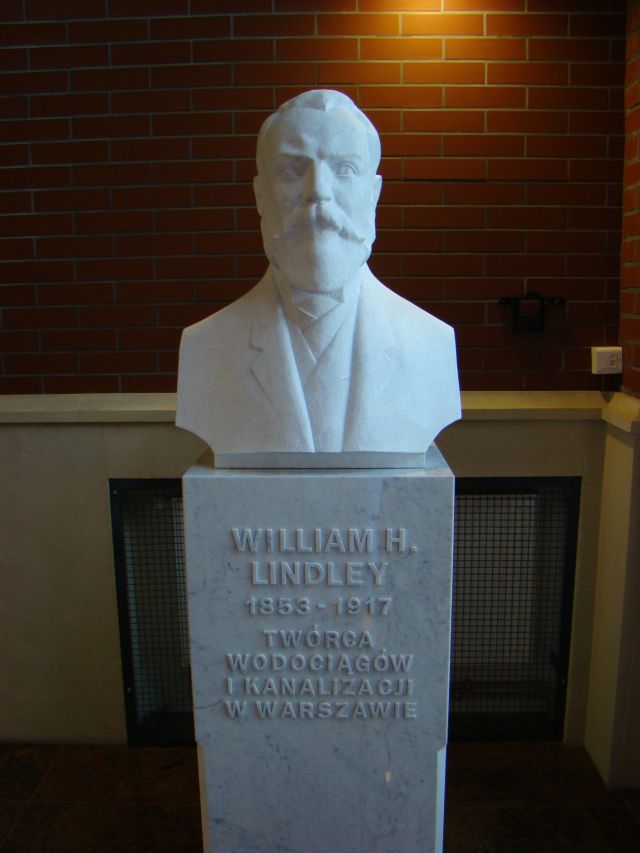
Popiersie W.H. Lindleya stoi w najnowszym obiekcie Miejskiego Przedsiębiorstwa Wodociągów i Kanalizacji - stacji ozonowania pośredniego i filtracji na węglu aktywnym. O ile płaskorzeźba przedstawiająca Williama Lindleay-ojca na frontonie budynku jest widoczna z ulicy Filtrowej, o tyle popiersie nie jest publicznie dostępne. Mogą je obejrzeć jedynie goście obiektu.
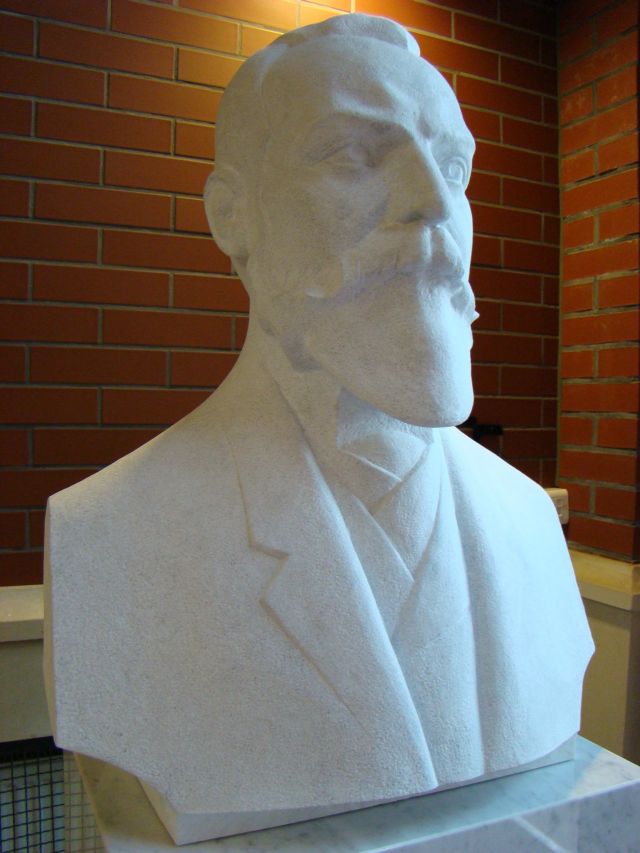
W nietypowy sposób łodzianie uhonorowali pamięć Wiliama Heerleina Lindleya. Z okazji Światowego Dnia Wody, na ulicy jego imienia zamontowano ozdobny właz kanalizacyjny poświęcony wielkiemu projektantowi systemów wodociągowo-kanalizacyjnych
Właz z nazwiskiem Williama Heerleina Lindleya, datami jego
urodzin i śmierci oraz napisem "Łodzianie projektantowi systemu
wodociągowo kanalizacyjnego 2010" w poniedziałek 22 marca 2010 roku zamontowany został w pobliżu rektoratu
Uniwersytetu Łódzkiego, na ulicy Lindleya. Odsłonili go prezesi wodociągów -
Mieczysław Teodorczyk i ŁSI - Celestyn Podgórski.
Odsłonięcie włazu to jeden z elementów obchodzonych w
Łodzi od niedzieli Dni Wody. Poza tym na Piotrkowskiej przed urzędem miasta
prezentowana jest wystawa fotografii prezentujących stare łódzkie włazy
kanalizacyjne.
Właz Lindleya jest kolejną z serii klap "Historia
Łodzi włazami pisana". Planowane jest wydanie albumu z historycznymi i
najnowszymi włazami łódzkich studzienek kanalizacyjnych. To z kolei inicjatywa
społeczników i miłośników historii Łodzi, którzy od kilku miesięcy prowadzą
inwentaryzacje najciekawszych i najcenniejszych łódzkich klap. Okazuje się, że
część z nich jest dużo starsza, niż sama kanalizacja w Łodzi i pochodzi z
lokalnych instalacji, później dopiero włączonych do systemu miejskiego.
http://www.dzienniklodzki.pl/stronaglowna/235486,lodz-odslonili-wlaz-lindleya,id,t.html?cookie=1





William Lindley's second son, Robert (Bob) Searles, was born on January 28,
1854 in Hamburg.His
father had similar hopes for him as for elder brother William Heerlein.He
was convinced that this profession could provide them with good financial
security for the future and allow them to live a prosperous life. Father William Lindley sent him, like his other sons,
to an English school. In 1880, at the age of 16, as wascustomary,
he was employed in the family business.It is
known that he was in Warsaw this year together with William Heerlein, where he
had the best impression of the meeting with President Sokrates Starynkiewicz.
The chance to obtain a contract caused William Heerlein to prepare his younger brother Robert to become his representative in Warsaw.Robert worked on the preliminary design of water and sewage systems together with his father and brother.It was on his shoulders that contacts with President Starynkiewicz and negotiating the terms of employing local specialists rested.
As his future wife, Robert chose Sara Amalia Marie Ladenburg, three years
younger than himself, the daughter of a banker from Frankfurt am Main, coming
from a large family, partly of German and partly French descent.The
wedding took place in Frankfurt on January 10, 1882.
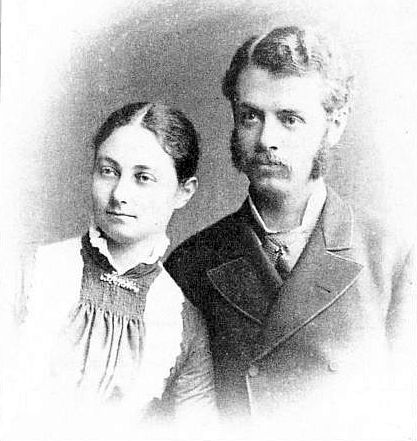
Robert S. Lindley and his wife Marie, 1881
As a representative of the family company, Robert resided in Warsaw in the years 1881–1888. Young couple felt great in this city.“We like the climate here very much.I am pleased to say that Marie is feeling as well as possible.We went out for a visit in the evening and danced waltzes for two hours," Robert wrote to his father about his pregnant wife.Robert and Marie chose the elegant Smolna Street as their new residence.
William Heerlein assigned the English engineer Wood to help Robert."As proof of the technical talent of both these engineers, I can boldly point to the structures they have already partially completed in Warsaw, despite the great difficulties encountered (...) finally, I must draw attention to the fact that both of my assistants have a quality whose importance should berecognized not only by me, but also by people to whom the affairs of Warsaw are no stranger, and this is conscientiousness in the full sense of the word, beyond any doubt (...)" - he justified his choice.In fact, the works began already in 1882. For Robert, a period of real challenge began, launching further tenders, subsequent stages of work and other activities.
On December 7, 1888, Robert finally left Warsaw.First
he went to Hamburg and then to Frankfurt am Main.Ultimately,
he chose the town of Blackheath near London as his new home.About
1897 Robert S. Lindley moved to Godstone Place, Surrey, where he purchased a
house and farm on the outskirts of the village.
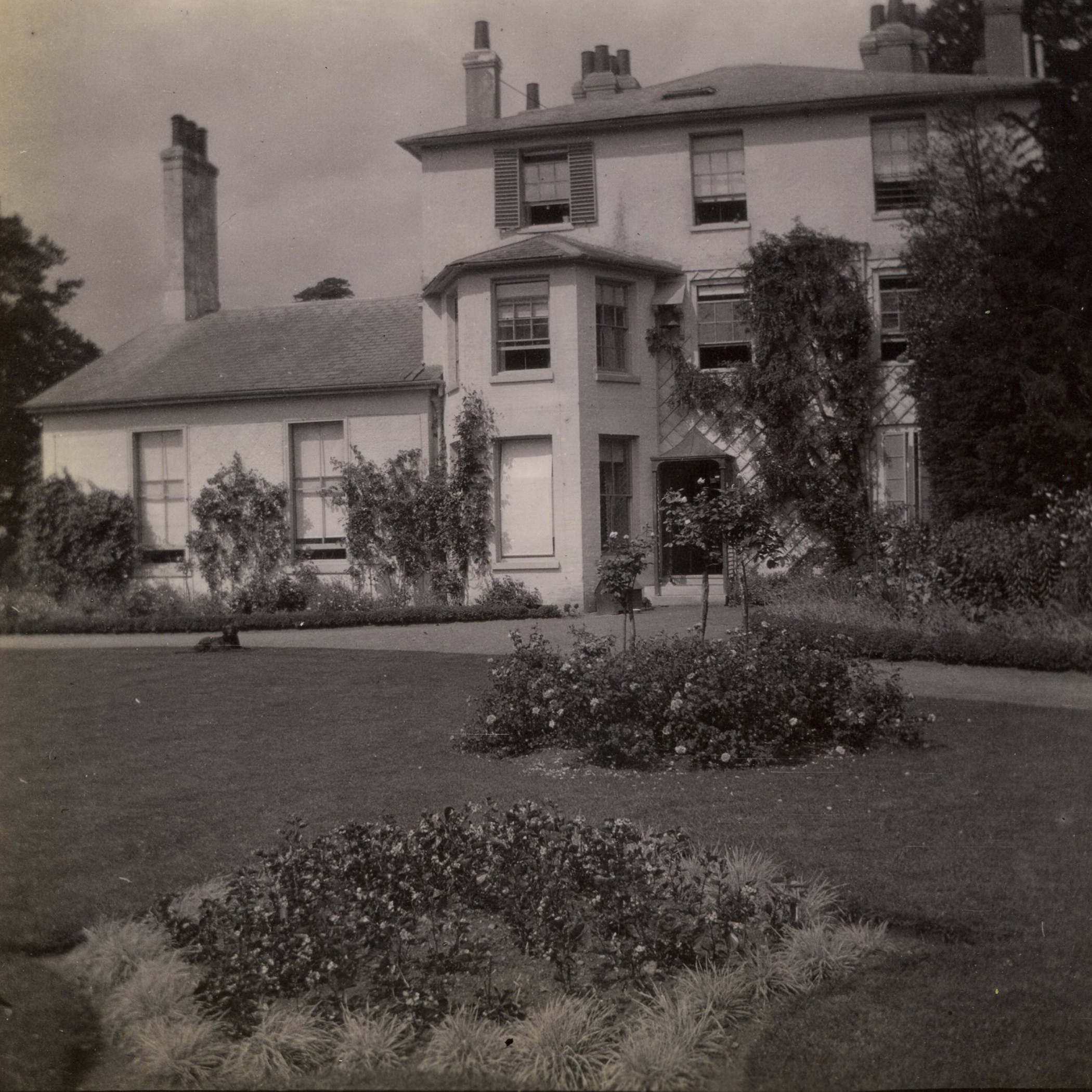
Home in Godstone

Robert S. Lindley with Marie and son Edward in the carriage
Wife Amalia Marie Ladenburg died in Godstone on March 10, 1925, July 9 of the same year, at the age of seventy-two years, passed away Robert S. Lindley.
As his grandson Robert Egerton wrote: “he lost the will to continue living, blaming himself and fate for the lack of a means of transport that could have taken her to the nearest hospital and perhaps saved her.The efforts of my mother, who took him with her to Italy to regain balance there, were in vain." Of the five children, four survived: two sons and two daughters. Three of them were born in Warsaw.
Katrin Lindley from Cologne sends her Christmas wishes
Ta read more click on: czytaj więcej
Katrin Lindley, a descendant of Joseph Lindley, graphic designer and author of children's books, whose professional life is connected with Cologne, a city in the state of North Rhine-Westphalia, in West Germany, sends us her Christmas wishes:

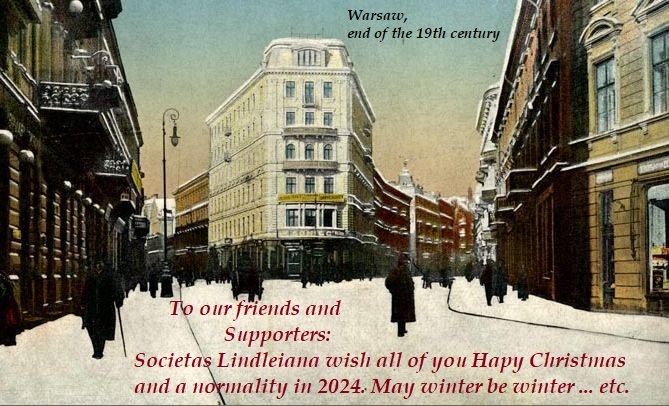
"To commemorate the commencement of the construction of the sewage
system of the city of Warsaw on 20 August 1883, according to the design and
under the direction of engineer W. Lindley and his sons, this stone was laid by
the acting mayor of the city, general lieutenant Starynkiewicz."

A marble plaque with this inscription was embedded in the wall of
the "A" sewer (collector) near the viaduct built in 1959 over the
perimeter line on the axis of Julian Marchlewski Street, now Jana Pawła II. Currently, this plaque
is in the Museum of Waterworks and Sewerage located at the Water Treatment
Station "Filtry", at Koszykowa 81.
The Polish -language plaque has traces of damage from World War II.
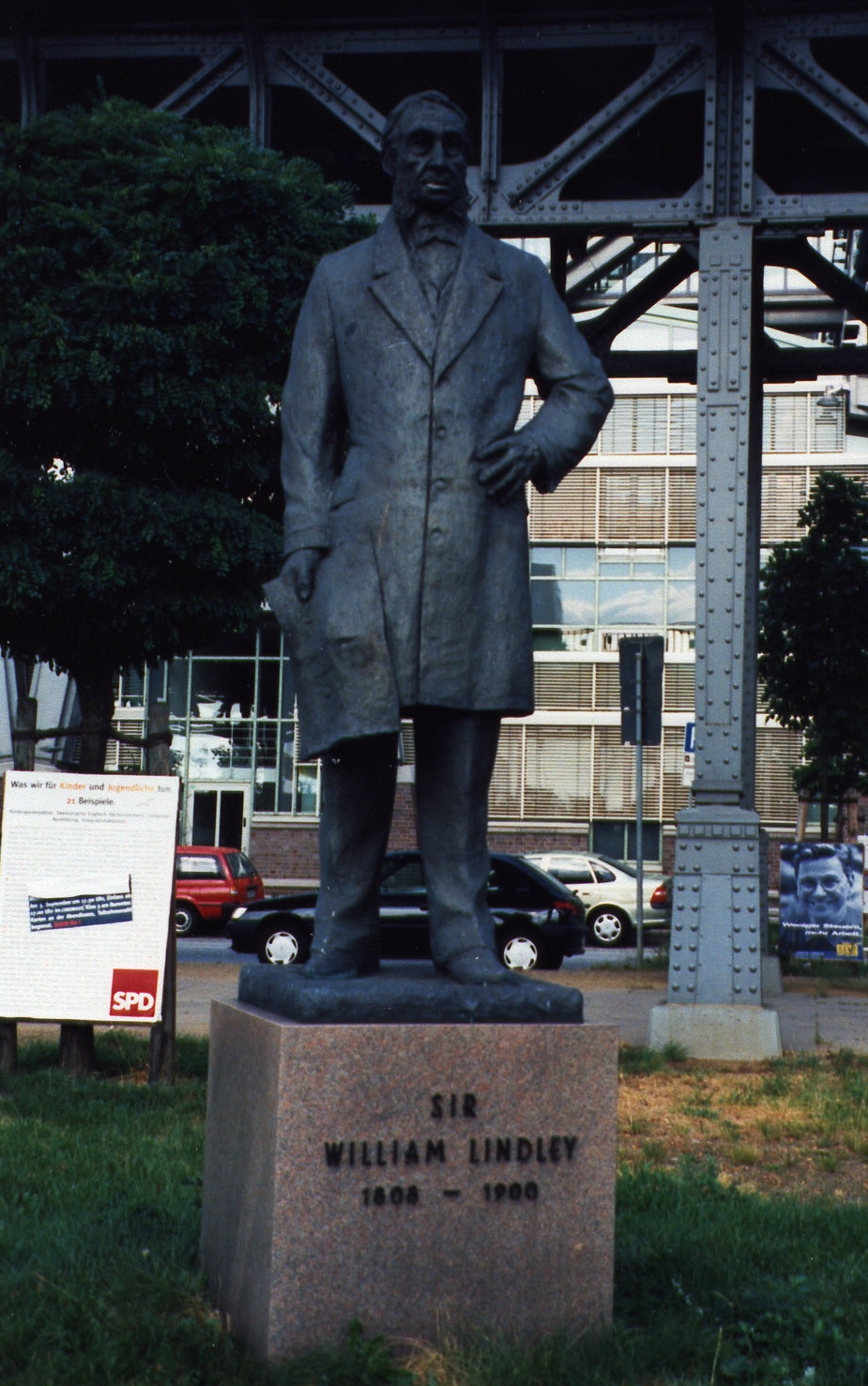
Monument of William Lindley
The inscription SIR WILLIAM LINDLEY 1808–1900 on the pedestal of the monument, erroneously was transferring the knighthood of William Heerlein's son to his father.
Senator Vahrenholt spoke of "pioneering engineering work" by Lindley, who had done "groundbreaking work." He also reminded that as a Briton, Lindley had active opponents among the deputies of the City Council, who would rather give his position as an engineer, planner and advisor to Hamburg "to the right forces from the German homeland".
The Senator of the Party also uttered the significant word "sorry" [Das Sorry an Lindley] for the unfair assessment of his contemporaries, as well as for a number of difficulties and unpleasantness, as a result of which the discouraged Lindley left Hamburg.
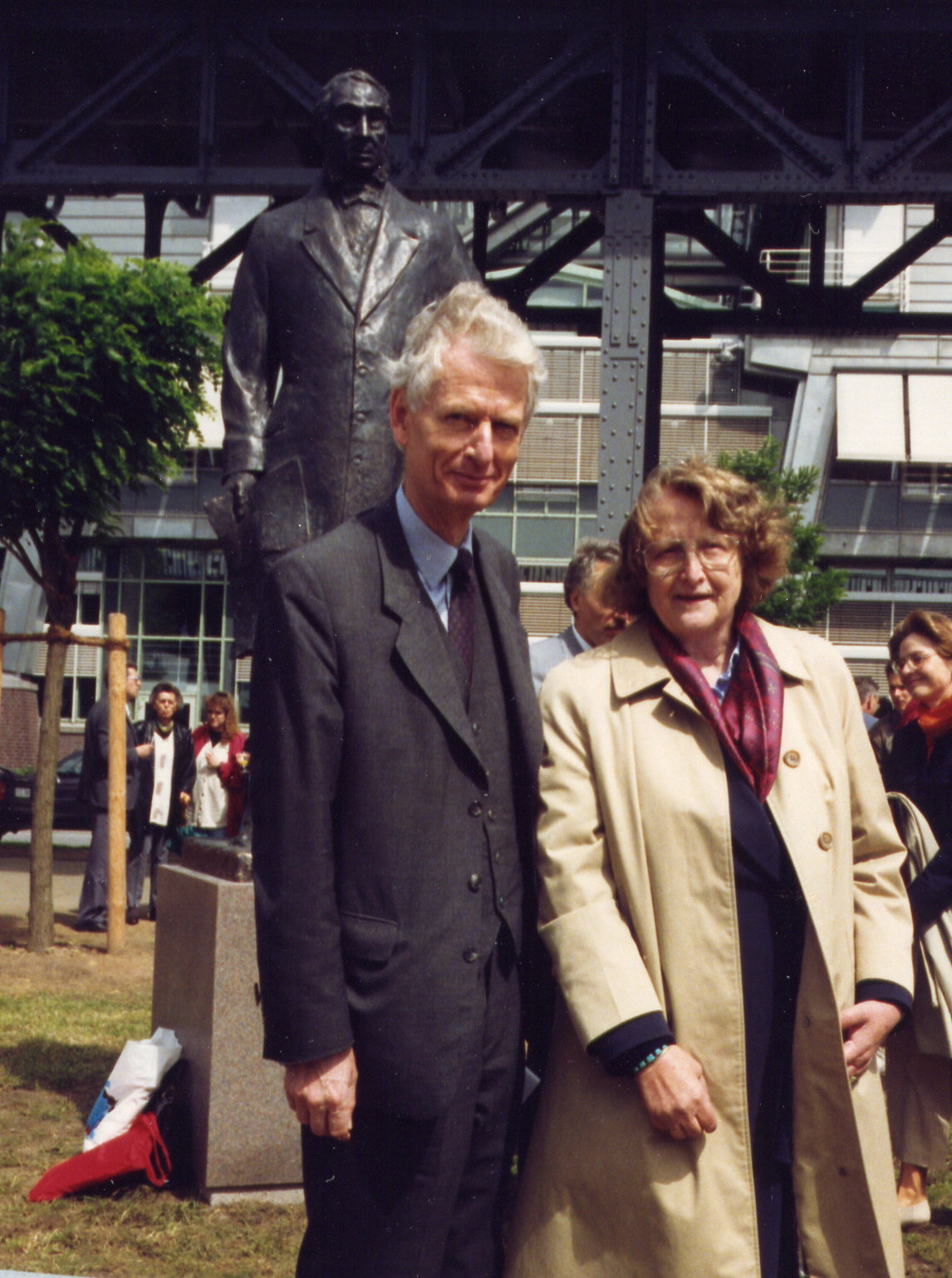
Among the guests invited to these ceremonies were the descendants of William Lindley's children - Margret Julia (1927-2007), MD, and Alexander Caspar (1934-2021). - Margret Julia (1927-2007), MD, and Alexander Caspar (1934-2021).
Consul Yarnold stressed: “I am proud of the achievements of my compatriot. It was not a romantic job, but without a sewage system, no city would have made the jump from the 19th to the 20th century”.
Here it remains only to add that Lindley and his eldest son William Heerlein had to deal with the opposition in all the cities where they came to work. He was a pioneer in his field on the European continent, and his projects were characterized by foresight and panache, and therefore high costs. The outlays incurred on them returned after many years, and the health effects of modern water supply and sewage systems were visible almost immediately
The final form of the Hamburg monument caused a wave of discussion and a dispute between the offices of the Hanseatic city of Hamburg. The bronze sculpture, the final cost of which amounted to 110,000 marks and was covered by over seventy donors, was assessed by the commission of the cultural office as "artistically worthless". However, the support for the sculptor expressed by the mayor of Hamburg, Hennig Voscherau, prevailed, and the monument was erected. The monument, although controversial as to its form, has already grown into the cityscape, just like the former buildings of William Lindley.
In the memory of his contemporaries, William Lindley is remembered as "the man with sidewhiskers", for historians of technical progress he became "the patriarch of the art of engineering" and "a man whose achievements are a breakthrough in the urban construction of Hamburg".


